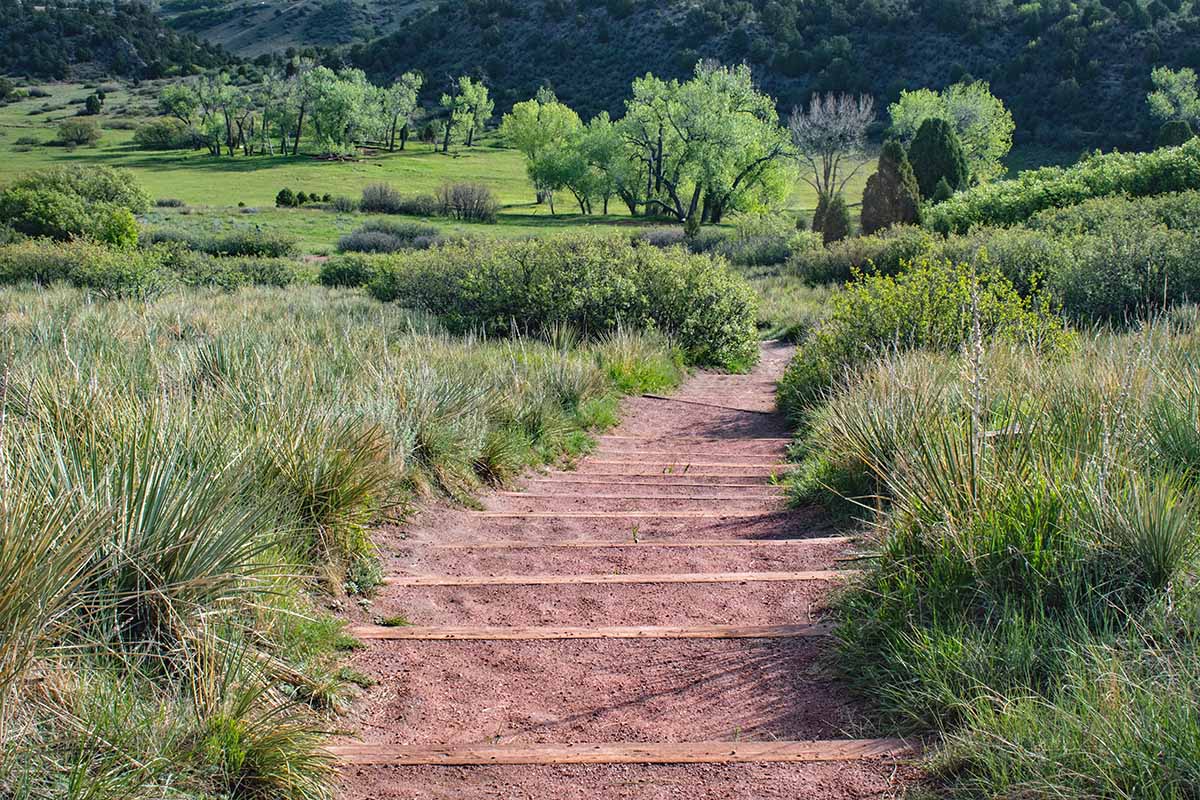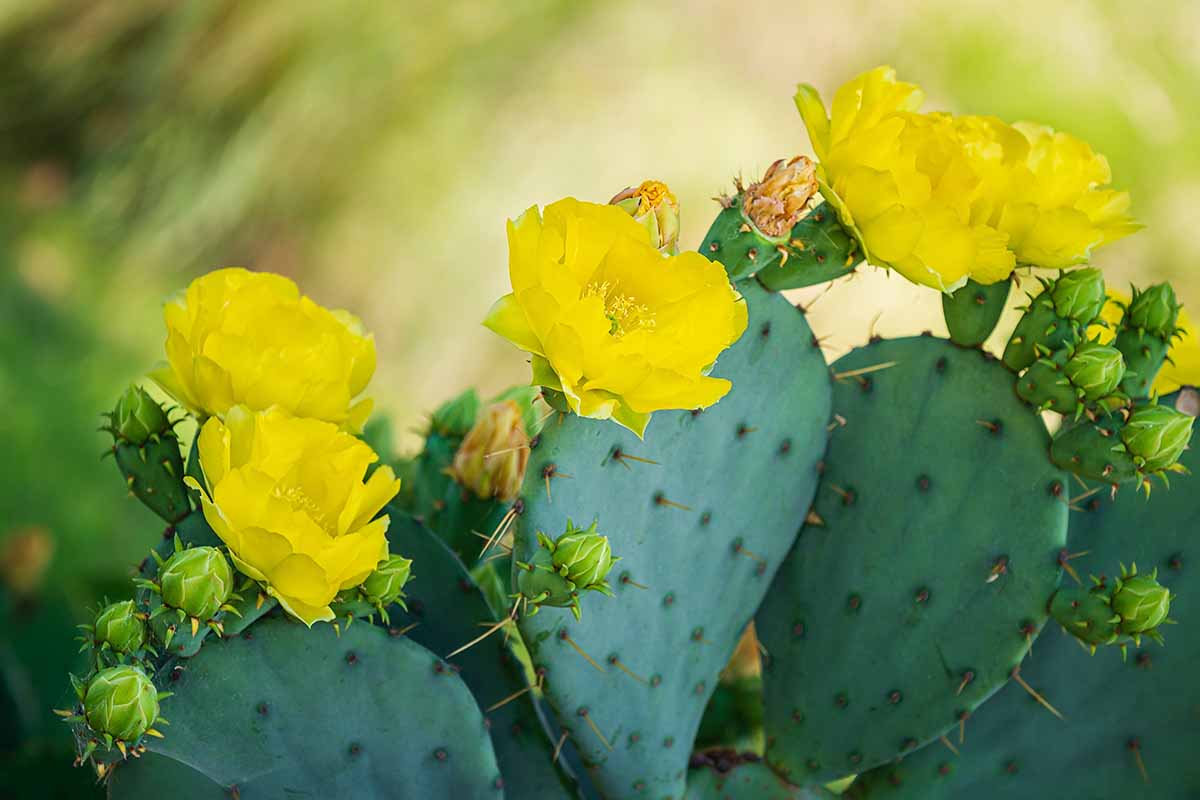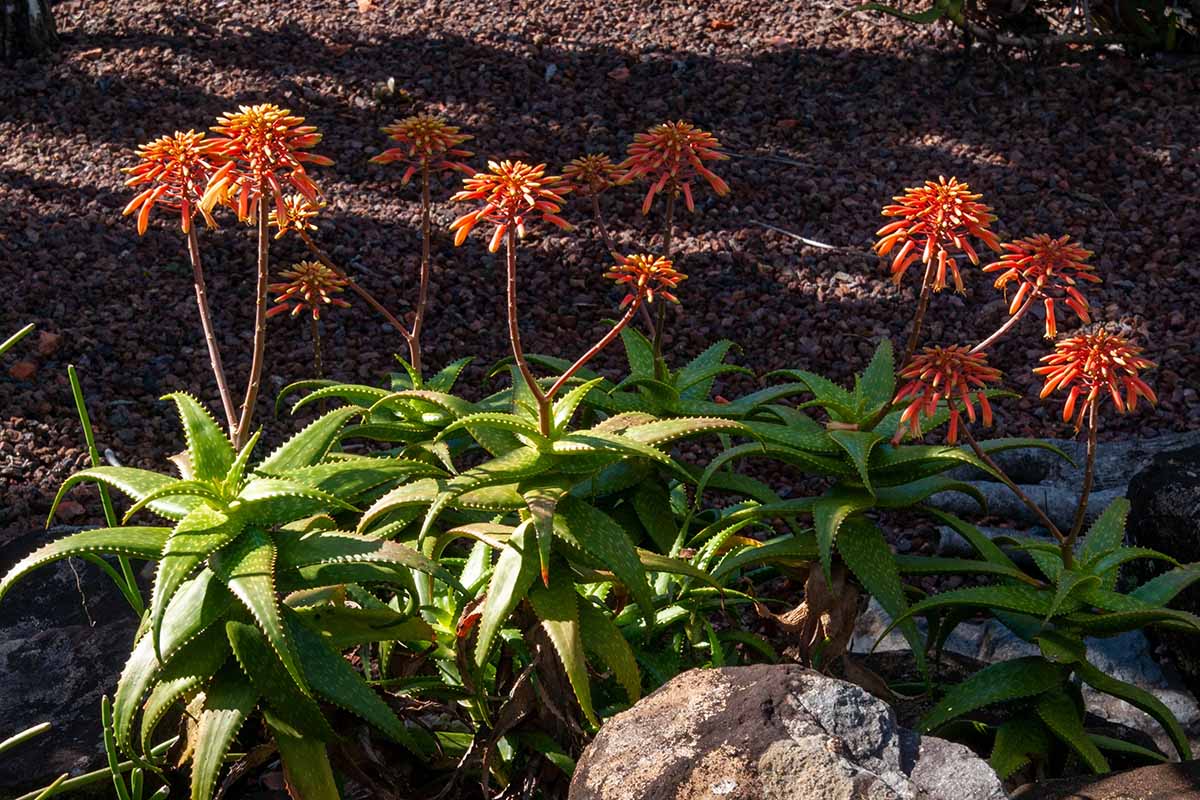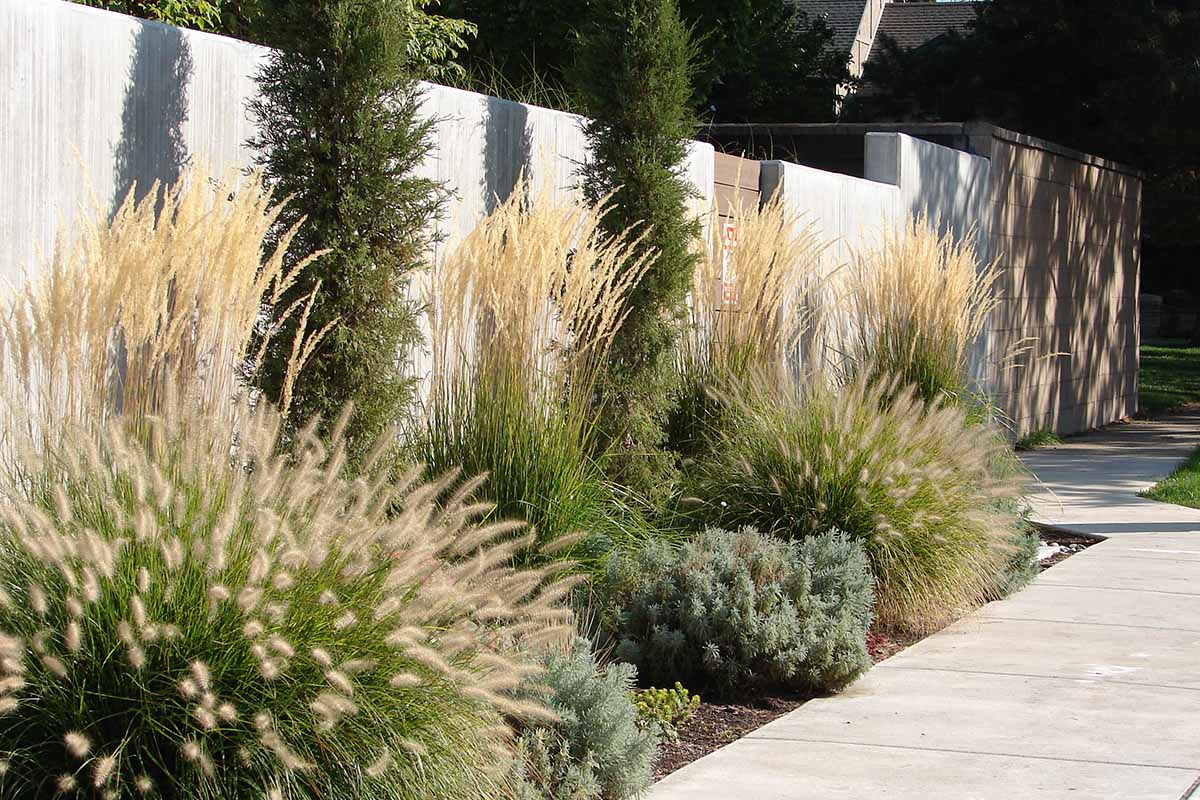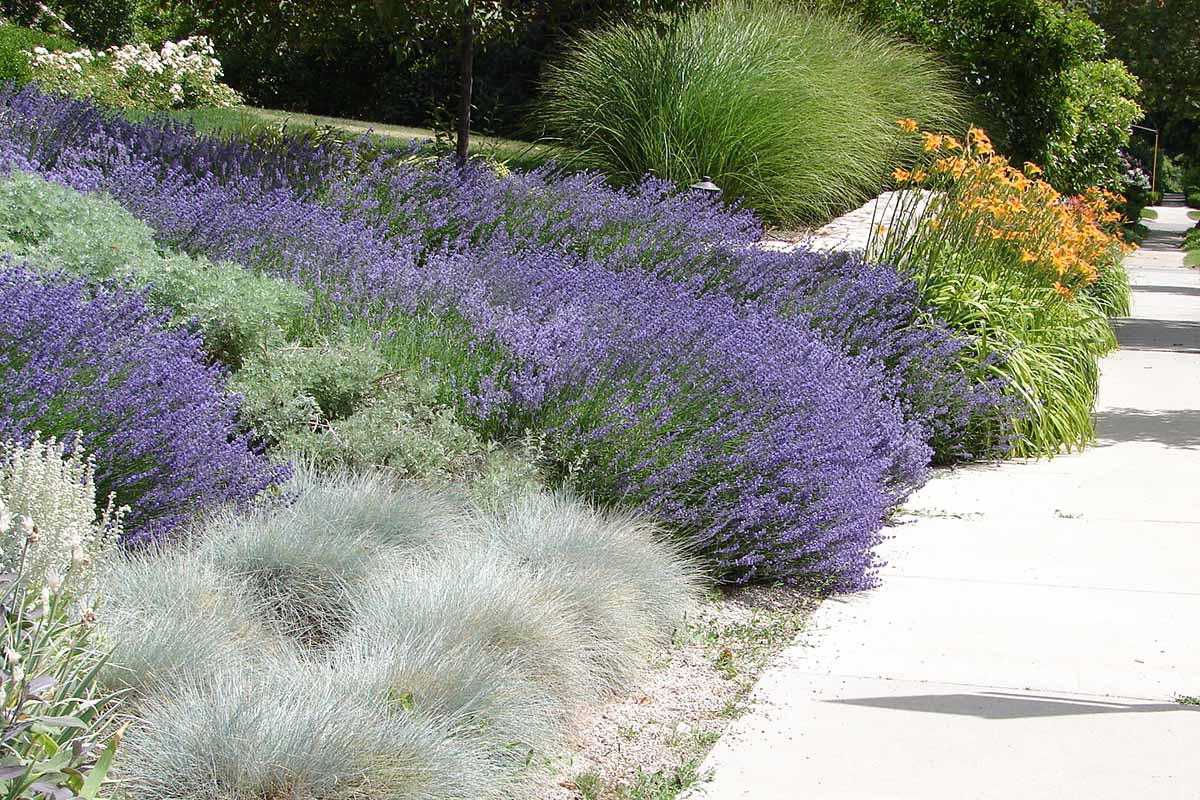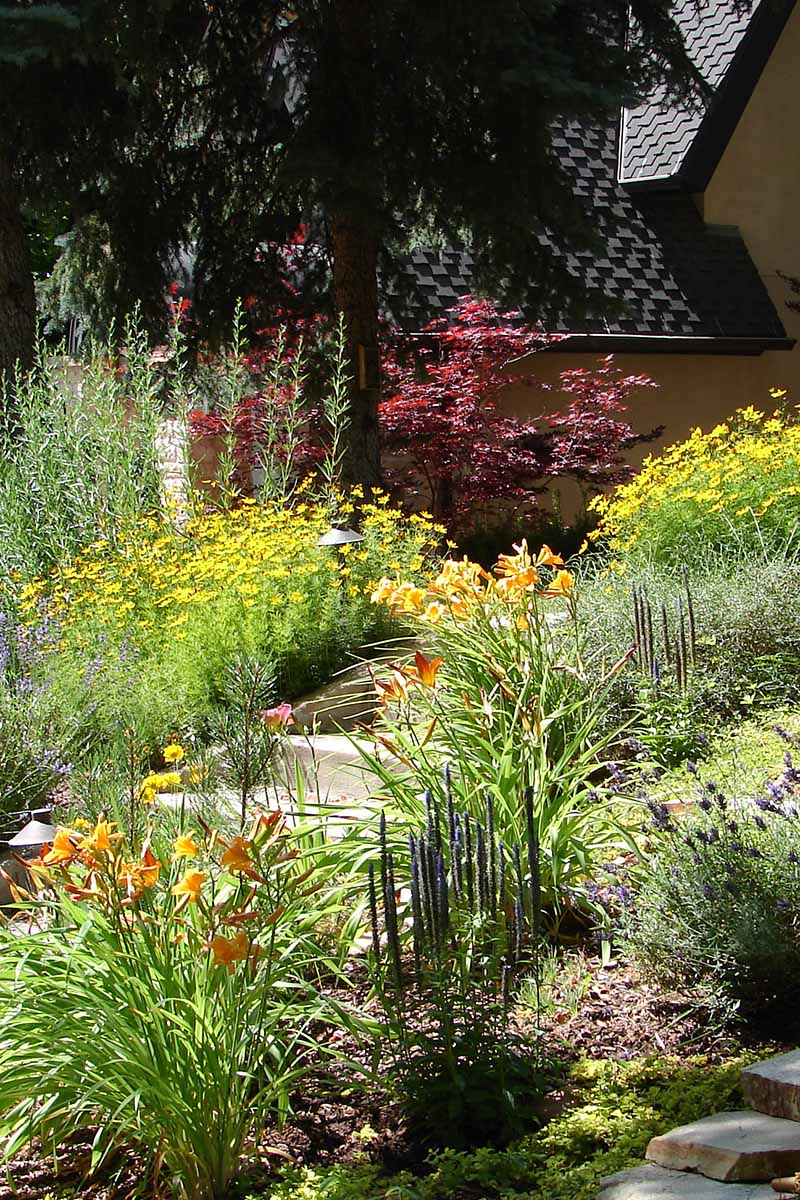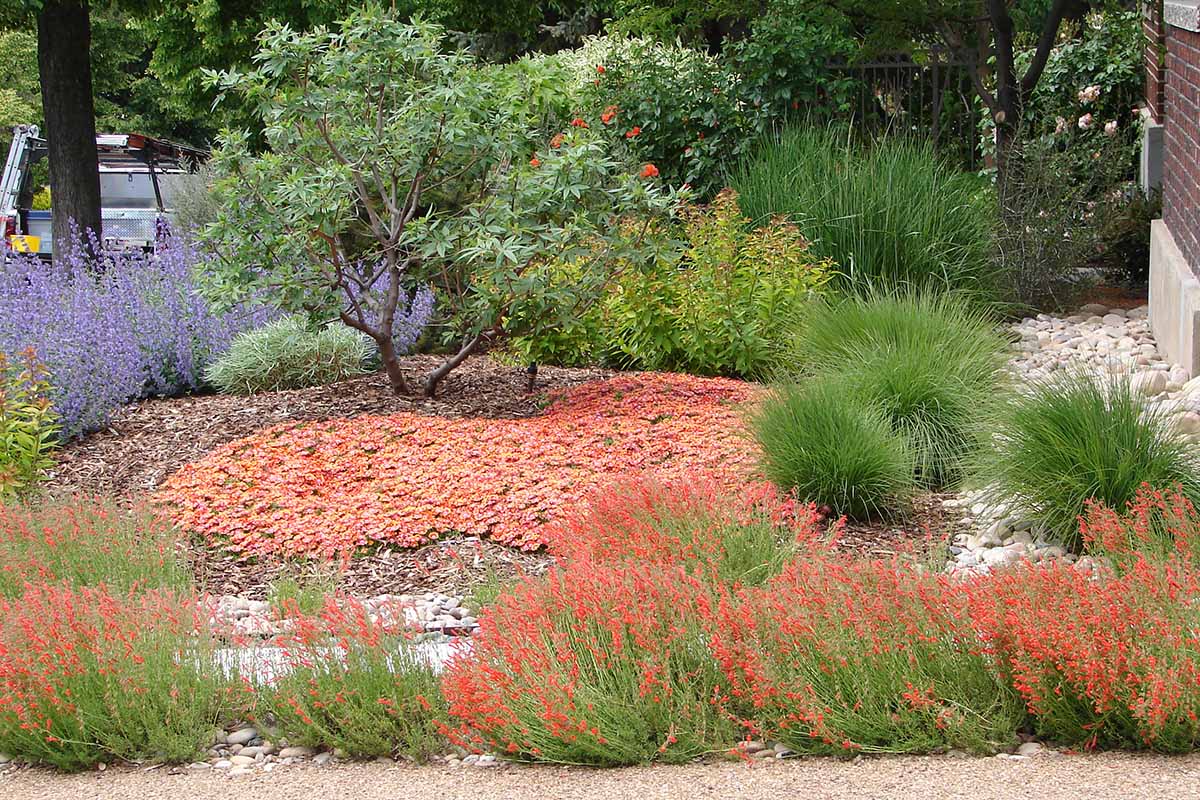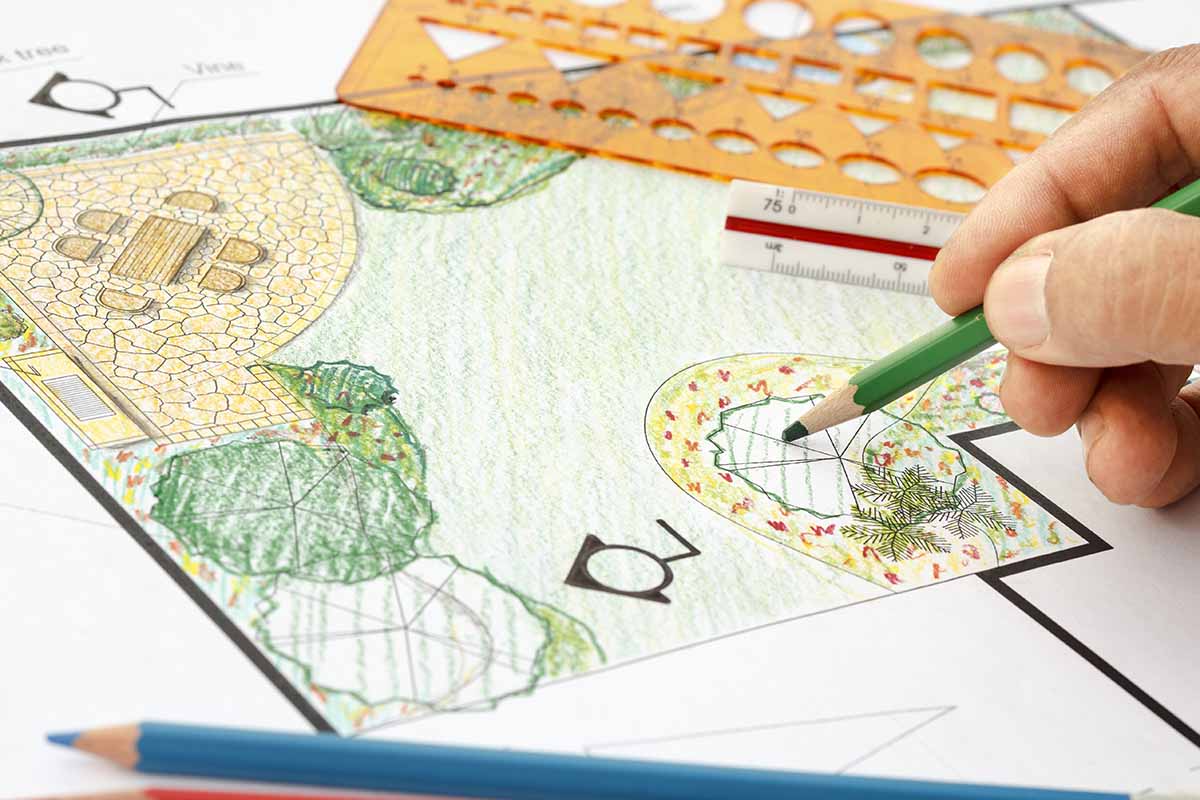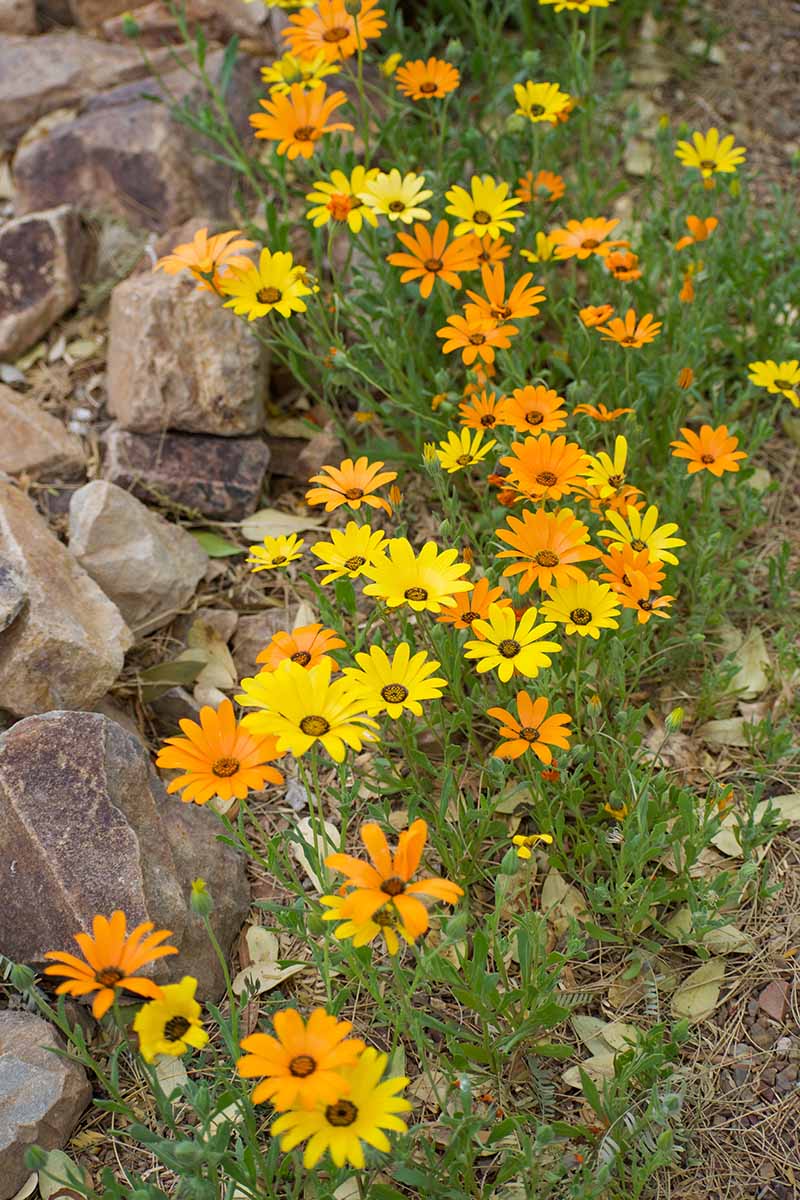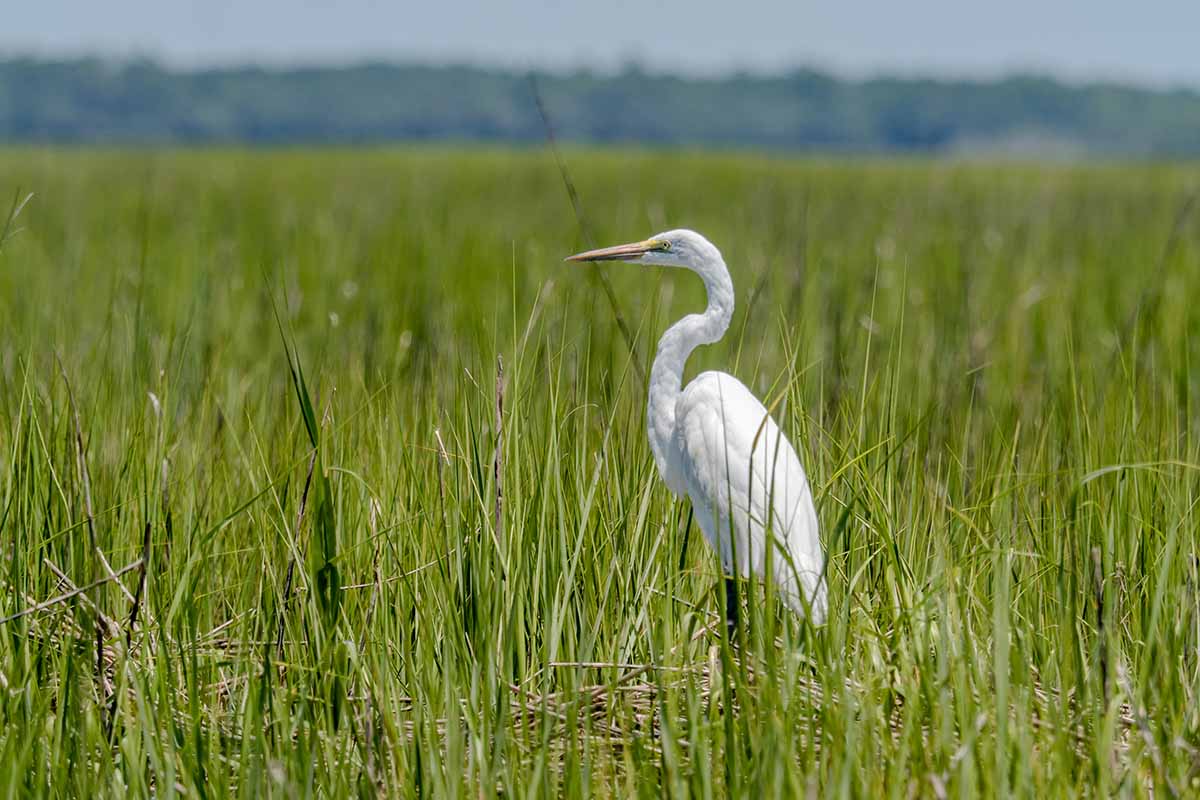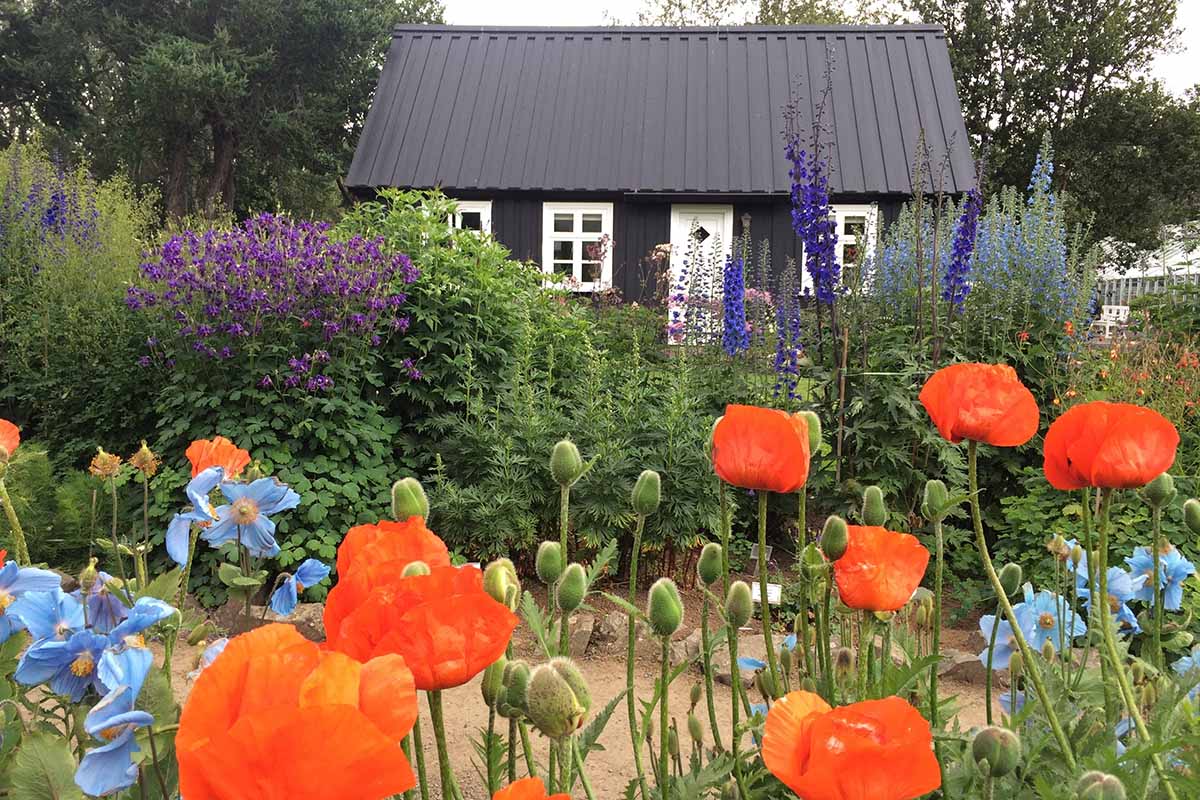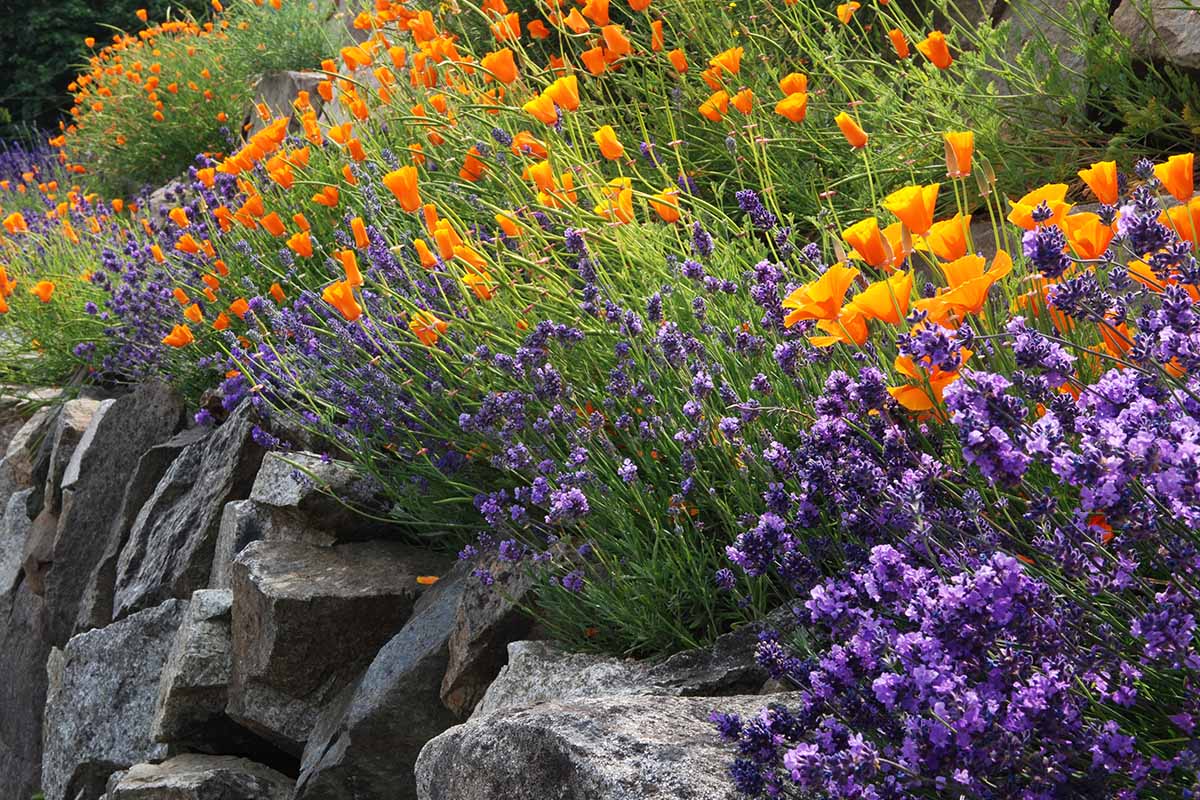If we dissect the word, the prefix “xero-” means dry, and the suffix “-phytic” means plant. Simply put, it’s the process of designing a sustainable, environmentally-friendly garden or landscape that works to conserve water, and this type of design is usually employed where liquid water is scarce. We link to vendors to help you find relevant products. If you buy from one of our links, we may earn a commission. Perhaps it seems like this type of garden should only be installed in the high desert where average annual rainfall is very low. While arid regions do benefit greatly from this type of landscaping, that’s a common misconception. This practice can be employed anywhere, and there are hundreds of plant species that have adapted to thrive without frequent rainfall or available fresh water in many environments, such as sandy, coastal regions, rocky, mountainous terrain, arctic tundra, and salt marshes. If you’re planning to install a xerophytic garden or just beginning to consider this as an option, you’ll find the details you need to make informed decisions right here – some of which can save you quite a bit of time and money, as well. Let’s get started! Stick with me and I’ll walk you through everything you need to know to plan and implement your awesome, water-saving garden! Here’s a preview of everything we’ll cover, up ahead:
What Are Xerophytes?
Xerophytes are plant species that are known to require less water than most to maintain good health. But rather than simply tolerating minimal available water, most of them exhibit fascinating adaptations designed to help them flourish, especially in harsh climates like those of the desert or plains of the western United States where scathingly hot days are followed by chilly nights. Places that are inhospitable for most types of plant life can be barren, and that exposed ground loses a lot of water as it evaporates, making it even drier. By installing suitable varieties, some of that moisture is retained in the ground, which can improve conditions over time. There are three types of xerophytes: ephemerals, non-succulents, and succulents. Ephemerals are short-lived species that technically avoid drought rather than thriving in it, such as flowers. California poppies are one example, as their seeds can remain dormant for a long period of time until adequate rainfall arrives. They sprout and grow quickly, and die off quickly as well. Non-succulents use their roots and trunks to maintain a water supply, such as some trees and grasses. And succulents store water in their thick, fleshy leaves. Let’s examine some of these adaptations a little more.
Xerophytic Adaptations
Features such as thick, fleshy, waxy pads, leaves, and stems with spongy interiors store more water than other types of leaves and stems. Succulents such as prickly pears and kalanchoe are examples of plants that have these. Smaller leaves are another adaptation that reduces surface area exposed to sunlight, wind, and heat, cutting down on the amount of fluid lost in transpiration. Spines or needles, such as those seen in pine trees and some types of cacti, are examples of these adapted leaves. Deep-reaching taproots or sprawling roots are produced to access areas that are often out of reach for other species, finding every drop of available moisture. Rather than fibrous root systems, they may have fleshy roots or tubers to maintain a supply of stored water through long periods of drought. In many xerophytes, such as snake plants and aloes, the process of photosynthesis is performed in the evening to avoid losing too much moisture in the heat of the day. The stomata, or “pores” in their leaves, are deeper, and open to transpire only after daytime temperatures have cooled down. Plants like cacti and succulents are sometimes coated in fuzz or waxy substances that reduce the damage they might receive from hot sun by reflecting it away. Hair-like trichosomes absorb airborne moisture from humidity and dew. This characteristic can aid in absorbing water from the air in locations where the substrate is salty or acidic. Finally, slower growth rates and periods of dormancy during dry seasons, or in general throughout the year, essentially slow or stop the need to absorb water to maintain physiological processes. So many amazing traits! But how do they benefit the gardener who installs plants with these qualities in their yard? That’s next on the agenda.
Benefits of Xerophytic Garden Design
In regions where water is a highly prized commodity, gardening with xerophytes can mean the difference between beautiful, sustainable, living landscapes and an expanse of parched, brown earth. It can also be the remedy for massive water consumption. Planting in this way reduces or eliminates the struggle to maintain landscaping that is not suited for the local climate, such as grassy lawns that need daily watering. But even in climates where drought isn’t as big a problem, conserving water is still the responsible thing to do. So many distinctive, easy-care xerophytes can be chosen to replace hard-to-support lawns or dry, barren ground, and all it takes to install them is a plan based upon the layout and environmental factors specific to your property and region. Native wildlife will also feel the difference when your property is designed to be a cradle of life and your plantings serve as a source of shelter, food, and shade. If you don’t mind sparing a few pads, flowers, fruits, or leaves, they’ll appreciate them as a source of water and nutrition. In contrast to xeriscaping, which generally uses drought-tolerant species, xerophytic gardening relies on species that have adapted to harsh climates to the extent that any other conditions can cause damage. With a layer of mulch or pea gravel covering open ground between specimens, xerophytic species will be better able to make use of groundwater and keep roots cooler in high heat. In cooler seasons, mulch and stone can retain warmth and slow ground freezing. It’s important to note that many xerophytes need supplemental water and care in their juvenile stages in order to establish the necessary metabolism, root systems, and strength to withstand harsh environments. Now, let’s outline the steps involved in designing a garden full of drought-resistant plants.
Planning a Xerophytic Garden
There are a few key actions to take to establish a strong plan for a xerophytic garden.
Assess the Land
Understanding the lay of the land where your garden will be installed is the first, and most imperative step. The idea is to create a space or site that works with the existing conditions, or with minimal amendments, while also conserving water. Having this information in hand will help you to select appropriate species and cultivars that will work best with your growing conditions and the layout of the site. Landscaping Project Planner Record information such as temperatures during the day and in the evening through all four seasons, and note how much average rainfall the site will typically receive. This is the time to note how far the site is from a hose bib or other fresh water source when it does come time to water, or consider any necessary irrigation of other types as well. Can rainwater be collected or diverted to where it’s needed most?
Assess Your Needs
Make a list of goals and preferences to accomplish with your design. Is the garden replacing a lawn, creating beds, or filling a large swath of barren ground? Will there be sidewalks, walkways, sitting areas, or a patio to install? Is there an existing rocky area or will one be added? What should the finished site look like? Sketch it out for an easy-to-reference visual representation of the design. These goals will create a foundation for choosing which specimens to include and also rule some out – for example, if the site is a bed close to a house, sidewalk, or other high-traffic area, it’s unlikely that a huge cactus or tree will be good choices. Bear in mind that plants with similar needs should be grouped together as often as possible to avoid having to make amendments to account for competing conditions, such as planting a species with moderate water or loamy soil needs near others that prefer minimal water and sandy soil. Some specimens may also have aggressive growth habits that can overtake others, and those should be installed in their own location. Make notes about ideas or concepts that interest you, such as pictures you’ve seen or specimens that suit your personal taste. Get creative or keep things simple and budget-friendly – it’s totally up to you.
Analyze Results
With your notes in hand, it becomes easier to understand trends in your local weather patterns and how the site reacts to them. If one area retains more moisture than another, such as a shady spot under the roofline or near an existing tree, this is a cue to avoid installing intolerant species there as they’ll surely dislike being mired in soggy ground. Intensely sunny areas with poor soil are great for some specimens, but spell certain death for others. Simple phrases notated on a graphed layout or in a journal, such as “dry, sandy, full sun” or “wet zone, low light,” will make it easier to pull together a list of suitable candidates. They’ll also help to determine where any amendments need to be made, such as adding drainage or opening space to increase sunlight penetration. Be sure to add any amendments prior to shopping for plants to complete the installation to avoid having grower’s pots scattered about, awaiting transplant into their permanent home. Cross-reference the data you’ve collected with your personal goals and preferences and compare them against xerophytic adaptations that work for your property. For example, areas with harsh sunlight may require waxy specimens such as cacti or succulents. Places that receive strong winds may call for specimens with needles to avoid losing too much moisture to evaporation. Use this information to make notes about which type of plants should be installed in each location.
Consider the Candidates
It’s time to make some decisions. Remember that the main goal is to reduce water consumption while creating a beautiful, healthy, lasting garden. Keep the texture, color, mature height and spread, and bloom period in mind for each species for a clear picture of what the finished site might look like throughout the year. Consider whether annuals or perennials will work best for the design – annuals require replacement each year in many cases, so if low maintenance is one of your top goals, they might not be best suited. If annuals are preferred, you might look for options that readily self-seed, such as poppies or coneflowers. The same holds true for plants that creep or spread on their own, as well as those that need frequent pruning or winter protection. High-maintenance species may not be the best choice in regions where you’ll be baking or freezing outdoors through parts of the year that experience extreme temperature highs or lows. In beds or mass plantings, some xerophytes might be easier to manage than others. It’s not a good idea to install dozens of spiny varieties in areas that need frequent weeding, for example. Native species make excellent choices and there are many that may be of interest. They work well with local wildlife and growing conditions, reducing the amount of initial effort it’ll take to establish and maintain them.
Time to Decide
Now is the fun part! Visit a garden center or shop online to find plants that fit your needs. Make notes about each one, and if it helps you to visualize, add pictures or sketches to your layout. If cost is an issue, keep that in mind during the selection process, particularly if any expensive annuals that will need to be replaced are on the list of candidates. Finally, it’s time to bring them home and put them in place! Why don’t we discuss how to make these selections in a bit more detail, since that’s a very important part of the process?
Choosing Xerophytic Plants
As I mentioned previously, there are many different adaptations among xerophytic plants that can work in multiple environments, but some are crucial in certain surroundings. Salt marshes, for example, have a mixed environment. These areas flood through part of the year and drain at other times, leaving behind salt deposits in the soil that deter many plant species from taking root. In that type of environment, a specimen must endure not only periods of drought, but salinated substrate and periods of flooding as well. It’s wise to choose varieties that form complex root systems, if possible, as they’ll anchor the soil and reduce erosion. Arid desert regions where it may not rain for months on end require planting species that can store a lot of their own water to survive for such a long time, and that can also withstand temperature fluctuations and hot sun. Succulents are some of the best suited options in these regions, but acacia, pine, and olive trees as well as cycads can often thrive there, too. Arctic zones are another place where xerophytes are important. There may be a lot of water present in these regions but it’s often frozen, even underground. Plants growing in these environments must collect moisture in other ways, and store it until periods of thawing arrive, which may only happen briefly once per year. It’s imperative to understand the type of growing environment at the installation site prior to making any choices, and the available conditions need to be taken into account. As you can see, planning can take some time and careful consideration. Be sure to allow enough time to plan ahead of planting season, or gathering the plants and breaking ground in your garden may need to be pushed to the following year. A gorgeous garden filled with shade trees, showy blooms, and eye-catching colors is only a few steps away, and the design process can be fun. Are you ready? If you’ve still got some questions, we’re here to help, as always! Please feel free to leave questions or photos in the comments section below – we love to see what you’ve got growing. But don’t go just yet! These growing guides might give you a little more insight into drought tolerant plants and how to incorporate them into your landscape:
Easy Landscaping with Ornamental Grasses: Simple Tips for Carefree SuccessHow to Grow and Care for YuccaHow to Plant and Grow Purple Sage

